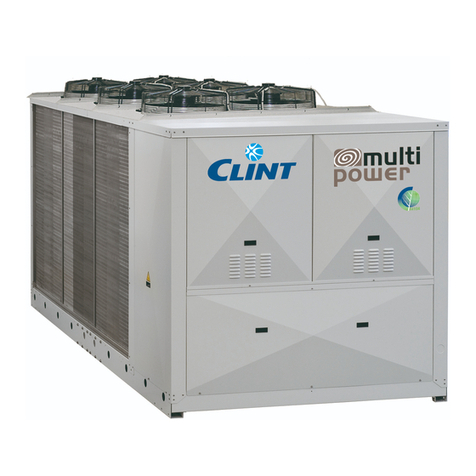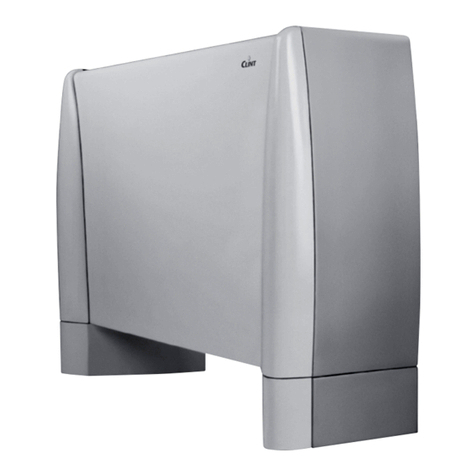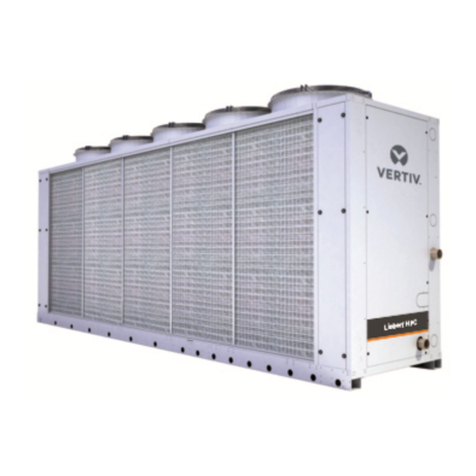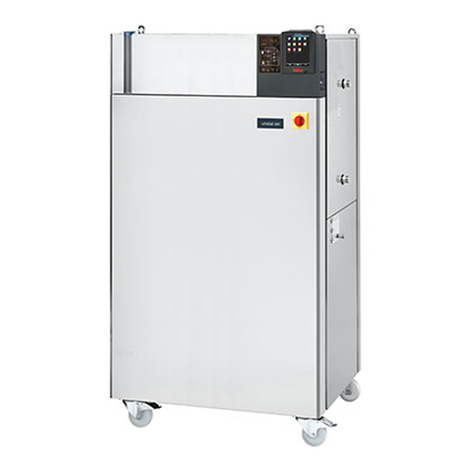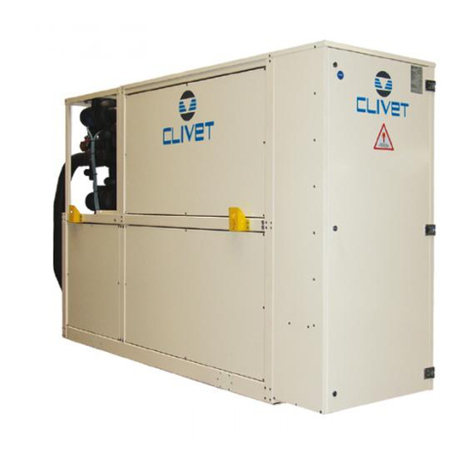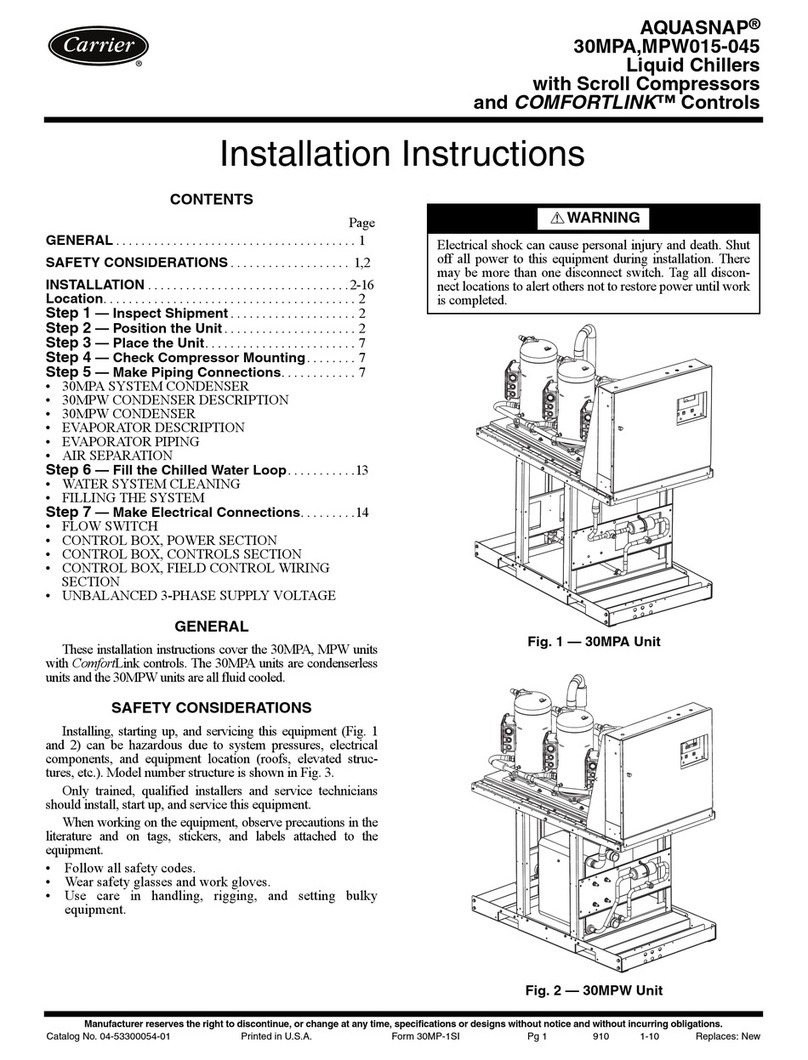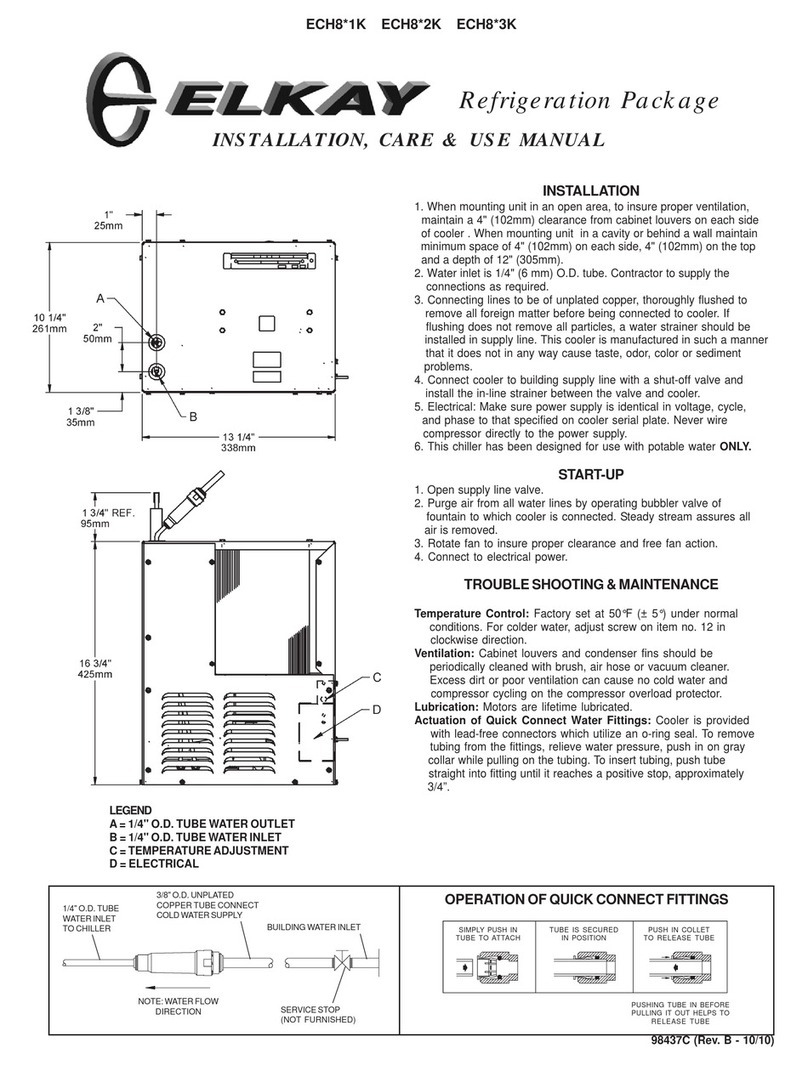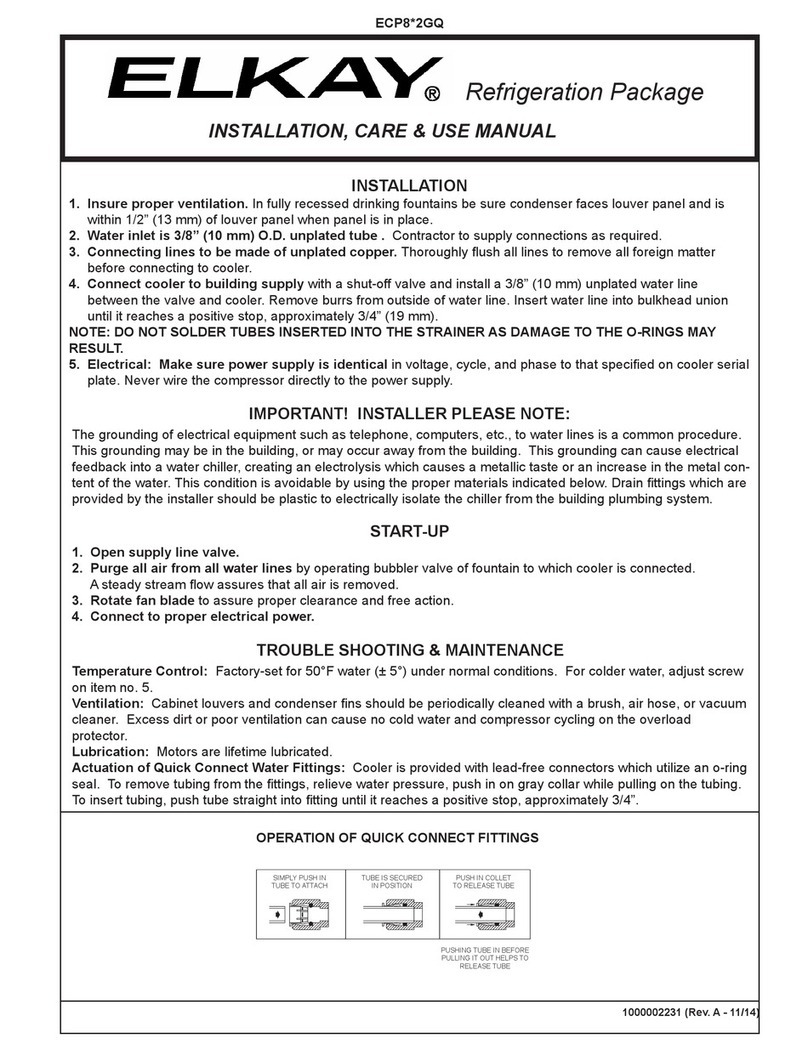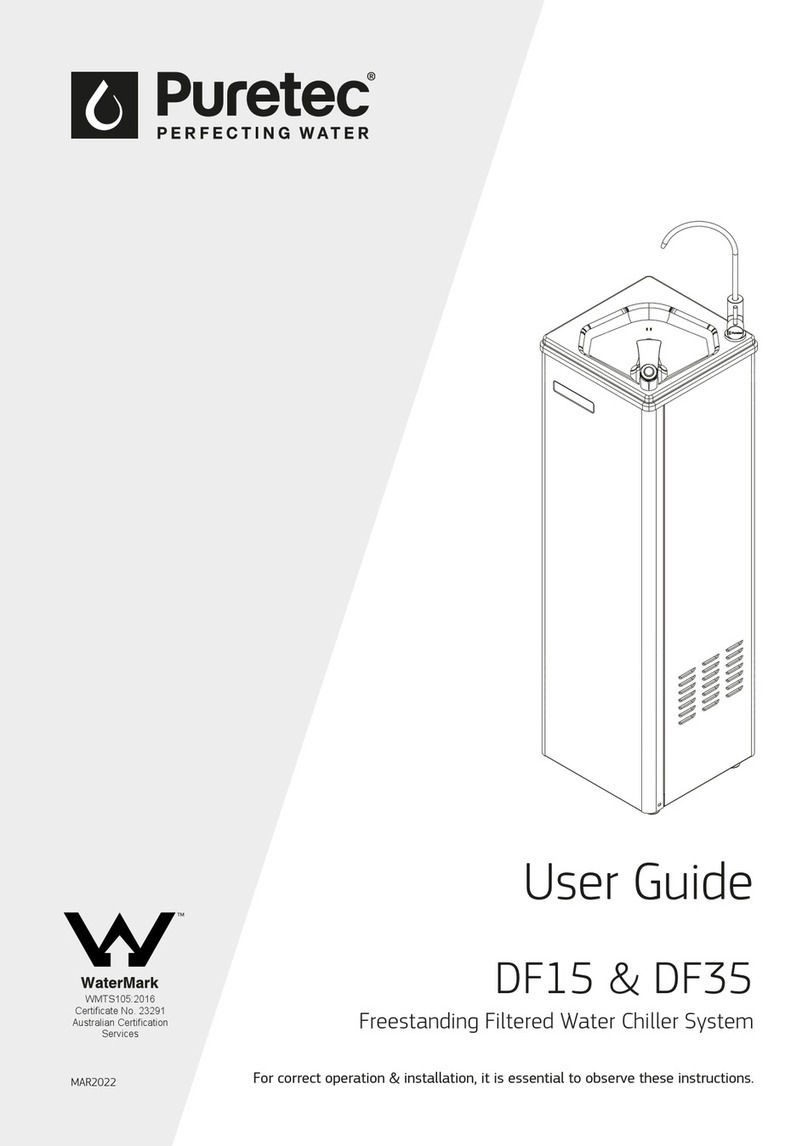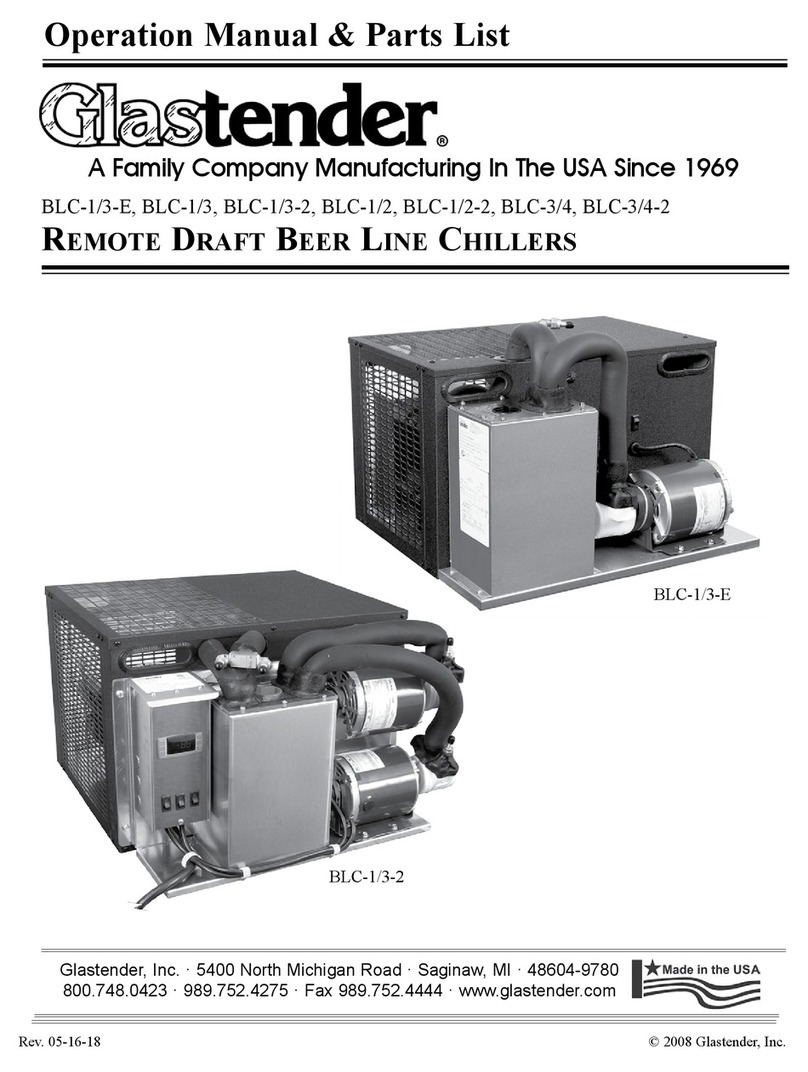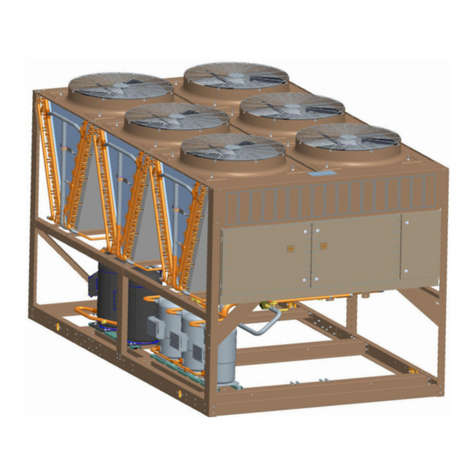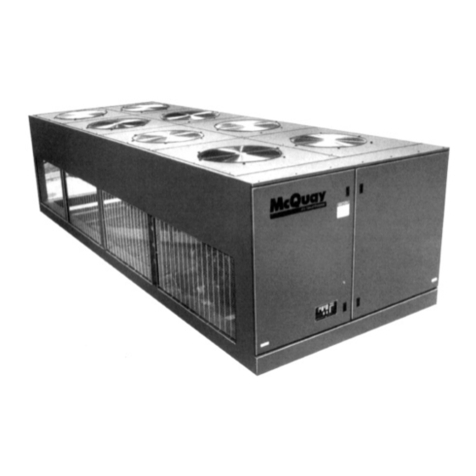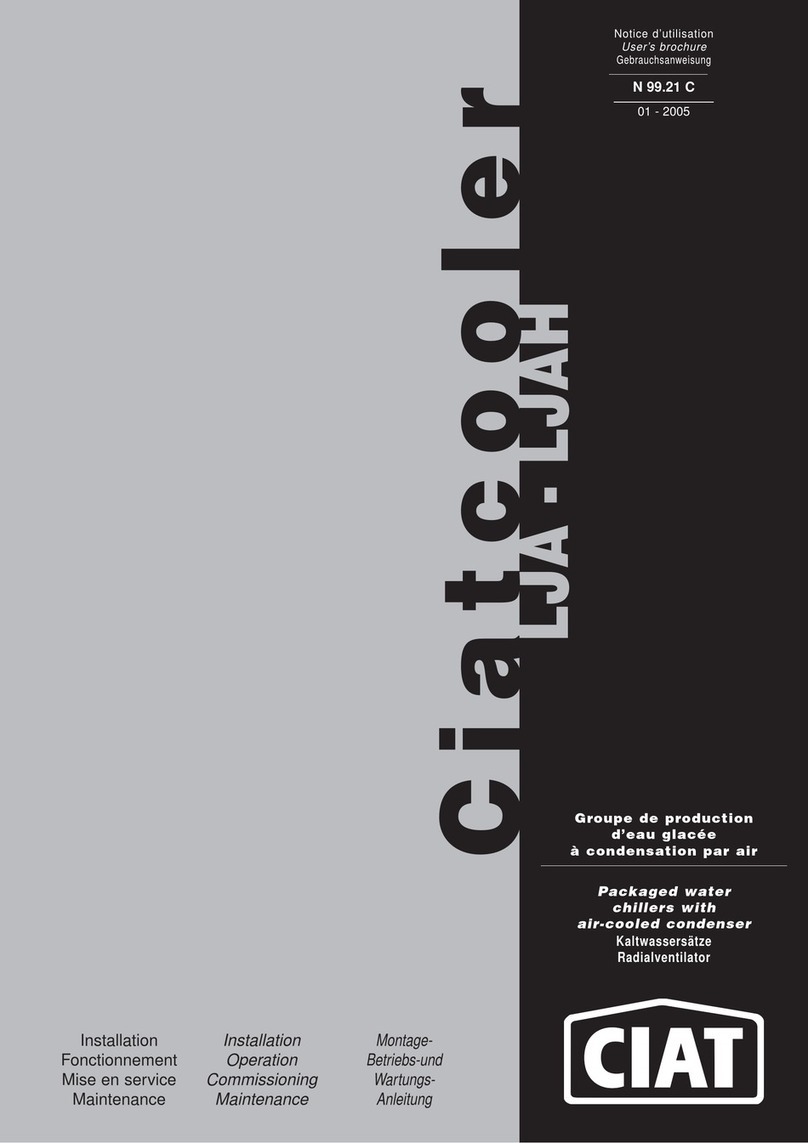Thermal Care TSE Instruction Manual



Table of Contents
Foreword .................................................................................................................................................................................................................. 1
Safety Guidelines .................................................................................................................................................................................................. 1
Pre-Installation....................................................................................................................................................................................................... 2
Receiving Inspection ....................................................................................................................................................................................... 2
Unit Storage........................................................................................................................................................................................................ 3
Installation - Chiller.............................................................................................................................................................................................. 3
Foundation.......................................................................................................................................................................................................... 3
Unit Location ...................................................................................................................................................................................................... 3
Rigging ................................................................................................................................................................................................................. 3
Process Fluid Piping ........................................................................................................................................................................................ 3
Condenser Water Piping ............................................................................................................................................................................... 3
Water Pressure Gauges.................................................................................................................................................................................. 4
System Temperature Sensor........................................................................................................................................................................ 4
Chiller Flow Sensor........................................................................................................................................................................................... 4
Installation - Remote Condenser.................................................................................................................................................................... 5
Location................................................................................................................................................................................................................ 5
Table 1 - Condenser Clearance Requirements ................................................................................................................................. 5
Flat Coil Condenser Foot Mounting.......................................................................................................................................................... 5
Figure 1 - Mounting Legs.......................................................................................................................................................................... 6
Lifting .................................................................................................................................................................................................................... 6
Interconnecting Refrigerant Piping........................................................................................................................................................... 6
Refrigeration Piping Design ......................................................................................................................................................................... 6
Figure 2 – Condenser Located at Chiller Level.................................................................................................................................. 7
Figure 3 – Condenser Located Below Chiller Unit........................................................................................................................... 7
Figure 4 - Condenser Located Above Chiller Unit........................................................................................................................... 7
Determining Equivalent Line Length ........................................................................................................................................................ 7
Table 2 – Equivalent Lengths of Elbows .............................................................................................................................................. 7
Liquid Line Sizing.............................................................................................................................................................................................. 7
Table 3 – Liquid Line Sizes for R410A................................................................................................................................................... 8
Discharge (Hot Gas) Line Sizing................................................................................................................................................................11
Figure 5 – Vertical Riser Traps ...............................................................................................................................................................11
Figure 6 - Double Discharge Riser.......................................................................................................................................................11
Table 4 - Horizontal or Downflow Discharge Line Sizes for R410A (inches OD) ..............................................................11
Table 5 - Upflow Discharge Line Sizes for R410A (inches OD).................................................................................................12
Calculating Refrigerant and Oil Charge.................................................................................................................................................12
Table 6 – Chiller and Condenser Refrigerant Charge...................................................................................................................13
Table 7 - Field Piping R-410A Refrigerant Charges......................................................................................................................13
Oil Charge Determination...........................................................................................................................................................................13
Installation - Electrical.......................................................................................................................................................................................13
Control Operation ..............................................................................................................................................................................................15
Screen Navigation..........................................................................................................................................................................................15
System Initialization.......................................................................................................................................................................................15
Figure 7 – Start-Up Splash Screen.......................................................................................................................................................15
Home – Chiller Home Screen.........................................................................................................................................................................16
System Overview ............................................................................................................................................................................................16
Figure 8 – Chiller Home Screen ............................................................................................................................................................16

Table 7 – System Overview Functions................................................................................................................................................16
Starting and Stopping the Chiller.................................................................................................................................................................17
Starting the Chiller .........................................................................................................................................................................................17
Figure 9 – Chiller Start ..............................................................................................................................................................................17
Stopping the Chiller ......................................................................................................................................................................................17
Figure 10 – Chiller Stop............................................................................................................................................................................17
Menu 1 - Overview.............................................................................................................................................................................................17
Figure 11 – Menu 1 Screen.....................................................................................................................................................................17
Menu 2 - Overview.............................................................................................................................................................................................17
Figure 12 – Menu 2 Screen.....................................................................................................................................................................17
Menu 1 - Alarms..................................................................................................................................................................................................18
Alarms Active ...................................................................................................................................................................................................18
Figure 13 –Alarms Active Handler .......................................................................................................................................................18
Alarms History .................................................................................................................................................................................................18
Figure 14 – Alarm History .......................................................................................................................................................................18
Warning Glycol................................................................................................................................................................................................18
Figure 15 – Warning Antifreeze............................................................................................................................................................18
Menu 1 – Diagnostics........................................................................................................................................................................................19
Diagnostics Menu...........................................................................................................................................................................................19
Figure 16 – Diagnostics Menu Screen................................................................................................................................................19
Figure 17 – Diagnostics Circuit Details Screen ...............................................................................................................................19
Figure 18 – Diagnostics Circuit Interlock Screen............................................................................................................................19
Figure 19 – Diagnostics Pumps Screen..............................................................................................................................................19
Figure 20 – Chiller Tank Screen.............................................................................................................................................................19
Figure 21 – Diagnostics Process Screen ............................................................................................................................................19
Figure 22 – Diagnostics Hardware Screen........................................................................................................................................19
Figure 23 – Diagnostics Import/Export Data Screen....................................................................................................................20
Figure 24 – Diagnostics Overview Screen.........................................................................................................................................20
Figure 25 – Diagnostics Import/Export Data Screen....................................................................................................................20
Menu 1 – Security...............................................................................................................................................................................................20
Security Menu..................................................................................................................................................................................................20
Figure 26 - Security Menu.......................................................................................................................................................................20
Figure 27 - Security – Log In Screen...................................................................................................................................................20
Figure 28 - Security – Add User Screen.............................................................................................................................................20
Figure 29 - Security – Edit User Screen..............................................................................................................................................21
Figure 30 - Security – Delete User Screen ........................................................................................................................................21
Figure 31 - Security – Change Password Screen............................................................................................................................21
Table 9 - Security – Users and Passwords ........................................................................................................................................21
Menu 1 – Inputs / Outputs .............................................................................................................................................................................21
Figure 32 - Main Inputs/Outputs Screen ..........................................................................................................................................21
Figure 33 - Inputs/Outputs – Temperature Inputs Screen.........................................................................................................22
Figure 34 - Inputs/Outputs – Pressure Inputs.................................................................................................................................22
Figure 35 - Inputs/Outputs – Analog Inputs Screen ....................................................................................................................22
Figure 36 - Inputs/Outputs – Digital Inputs Screen......................................................................................................................22
Figure 37 - Inputs/Outputs – Analog Outputs Screen.................................................................................................................22
Figure 38 - Inputs/Outputs – Digital Outputs Screen..................................................................................................................22
Figure 39 - Inputs/Outputs – Digital Outputs Screen..................................................................................................................22

Menu 1 – User Setup.........................................................................................................................................................................................23
Figure 40 - User Setup - Menu 1 Screen...........................................................................................................................................23
Figure 41 - User Setup - Menu 2 Screen...........................................................................................................................................23
Figure 42 - User Setup - Menu 3 Screen...........................................................................................................................................23
Figure 43 - User Setup - Menu 4 Screen...........................................................................................................................................23
Figure 44 - User Setup - Menu 5 Screen...........................................................................................................................................23
User Setup – Alarm Setup ...............................................................................................................................................................................23
Figure 45 - User Setup - Alarm Setup Screen .................................................................................................................................23
Table 10 – Alarm Setup Parameters....................................................................................................................................................24
User Setup – Hot Gas Bypass.........................................................................................................................................................................24
Figure 46 - User Setup – Hot Gas Bypass Setup Screen .............................................................................................................24
Table 11 – Hot Gas Bypass Valve Setup Parameters....................................................................................................................24
User Setup – Pump Control............................................................................................................................................................................25
Pump Control Screen....................................................................................................................................................................................25
Figure 47 - User Setup – Pumps Screen (Dedicated Backups).................................................................................................25
Figure 48 - User Setup – Pumps Screen (Dual Standby) ............................................................................................................25
Figure 49 - User Setup – Pumps VFD .................................................................................................................................................25
User Setup – EEV Control ................................................................................................................................................................................25
Figure 50 - User Setup – EEV Control Setup Screen.....................................................................................................................25
Table 12 – EEV Control Setup Parameters........................................................................................................................................25
User Setup – Compressor Staging...............................................................................................................................................................26
Figure 51 - User Setup – Compressor Staging Setup Screen ...................................................................................................26
Table 13 – Compressor Staging Setup Parameters ......................................................................................................................26
User Setup – Stage Order................................................................................................................................................................................26
Compressor Stage Order Screen..............................................................................................................................................................26
Figure 52 - User Setup – Stage Order Setup Screen....................................................................................................................26
Table 14 – Stage Order Setup Parameters .......................................................................................................................................26
User Setup – Discharge Control Setup.......................................................................................................................................................27
Discharge Control Setup Screen ..............................................................................................................................................................27
Figure 53 - User Setup – Discharge Control Setup Screen........................................................................................................27
Table 15 – Discharge Control Setup Parameters ...........................................................................................................................27
Figure 54 - User Setup – Discharge Control Setup Screen (Remote Air Cooled) .............................................................27
Table 16 – Discharge Control Setup Parameters ...........................................................................................................................27
User Setup – Dynamic Lift Setup ..................................................................................................................................................................28
Dynamic Lift Setup Screen..........................................................................................................................................................................28
Figure 55 - User Setup – Dynamic Lift Setup Screen ...................................................................................................................28
Table 17 – Dynamic Lift Parameters....................................................................................................................................................28
User Setup – Serial Communications Setup.............................................................................................................................................28
Modbus RTU Setup Screen.........................................................................................................................................................................28
Figure 56 - User Setup – Modbus RTU Setup Screen ..................................................................................................................28
User Setup – Temperature Retransmit.......................................................................................................................................................28
Figure 57 - User Setup – Temperature Retransmit Setup Screen ...........................................................................................28
User Setup – IP Address...................................................................................................................................................................................28
Figure 58 - User Setup – IP Address Setup Screen .......................................................................................................................28
User Setup – Units..............................................................................................................................................................................................28
Figure 59 - User Setup – Display Units Setup Screen ..................................................................................................................28

User Setup – Remote Setpoint......................................................................................................................................................................29
Figure 60 - User Setup – Remote Setpoint Setup Screen ..........................................................................................................29
User Setup – Primary / Secondary ...............................................................................................................................................................29
Figure 61 - User Setup – Primary / Secondary Setup Screen....................................................................................................29
User Setup – Chiller Capacity.........................................................................................................................................................................29
Chiller Capacity Screen.................................................................................................................................................................................29
Figure 62 - User Setup – Chiller Capacity Setup Screen .............................................................................................................29
User Setup – Date/Time ...................................................................................................................................................................................29
Date/Time Screen...........................................................................................................................................................................................29
Figure 63 - User Setup – Date / Time Setup Screen.....................................................................................................................29
User Setup – Pump Down ...............................................................................................................................................................................30
Pump Down Screen .......................................................................................................................................................................................30
Figure 64 - User Setup – Pump Down Setup Screen....................................................................................................................30
User Setup – Evaporator Valve......................................................................................................................................................................30
Evaporator Valve Control Screen .............................................................................................................................................................30
Figure 65 - User Setup – Evaporator Valve Control Setup Screen..........................................................................................30
User Setup – Miscellaneous Process Control...........................................................................................................................................30
User Setup – Miscellaneous Local Mode...................................................................................................................................................30
User Setup – Miscellaneous Automatic Start...........................................................................................................................................30
User Setup – Miscellaneous Current Sensors ..........................................................................................................................................30
Figure 66 - User Setup – Miscellaneous Control Setup Screen ...............................................................................................30
User Setup – Chiller Tank and Water Makeup ........................................................................................................................................31
Figure 67 - User Setup – Chiller Tank and Water Makeup Setup Screen ............................................................................31
Menu 1 – Trending.............................................................................................................................................................................................31
Figure 68 - System Trending 1 Screen...............................................................................................................................................31
Figure 69 - System Trending 2 Screen...............................................................................................................................................31
Figure 70 - System Trending 3 Screen...............................................................................................................................................31
Figure 71 - System Trending 4 Screen...............................................................................................................................................31
Menu 2 – Full Screen .........................................................................................................................................................................................32
Figure 72 - Menu 2 – Full Screen .........................................................................................................................................................32
Modbus...................................................................................................................................................................................................................33
Table 18 – Modbus Table........................................................................................................................................................................33
Start-Up ..................................................................................................................................................................................................................35
Step 1 – Connect Main Power...................................................................................................................................................................35
Step 2 – Fill Coolant Circuit ........................................................................................................................................................................35
System Fill Water Chemistry Requirements.....................................................................................................................................35
Table 19 – Fill Water Chemistry Requirements...............................................................................................................................36
Table 20 - Recommended Glycol Solutions.....................................................................................................................................37
Step 3 - Check Condenser ..........................................................................................................................................................................37
Water-Cooled Condenser Check..........................................................................................................................................................37
Remote Air-Cooled Condenser Check...............................................................................................................................................37
Step 4 – Check Refrigerant Valves...........................................................................................................................................................37
Step 5 – Check Low Temperature Alarm...............................................................................................................................................37
Step 6 – Turn On Control Power ..............................................................................................................................................................37
Step 8 – Initial Unit Operation...................................................................................................................................................................38

Preventive Maintenance...................................................................................................................................................................................38
Once a Week ....................................................................................................................................................................................................38
Once a Month..................................................................................................................................................................................................39
Once Every 6 Months....................................................................................................................................................................................39
Once a Year.......................................................................................................................................................................................................39
Cleaning the Operator Interface...................................................................................................................................................................40
General Troubleshooting.................................................................................................................................................................................41
Preventive Maintenance Checklist ...............................................................................................................................................................42
Drawings.................................................................................................................................................................................................................42

1
Foreword
The central chiller consists of a refrigeration circuit to
provide cooling water to coolant.
This manual is to serve as a guide for installing,
operating, and maintaining the equipment. Improper
installation, operation, and maintenance can lead to
poor performance and/or equipment damage. Use
qualified installers and service technicians for all
installation and maintenance of this equipment.
This manual is for our standard product and is
general in nature. Unit-specific drawings and
supplemental documents are included with the
equipment as needed. Additional copies of
documents are available upon request.
Due to the ever-changing nature of applicable
codes, ordinances, and other local laws pertaining to
the use and operation of this equipment, we do not
reference them in this manual.
The equipment uses a hydrofluorocarbon (HFC),
trade named R-410A, as a chemical refrigerant for
heat transfer purposes. This chemical is sealed and
tested in a pressurized system containing ASME
coded vessels; however, a system failure will release
it. Refrigerant gas can cause toxic fumes if exposed
to fire. Place these units in a well-ventilated area,
especially if open flames are present. Failure to
follow these instructions could result in a hazardous
condition. We recommend the use of a refrigerant
management program to document the type and
quantity of refrigerant in the equipment. In addition,
we recommend only licensed and EPA certified
service technicians work on our refrigeration circuits.
Safety Guidelines
Observe all safety precautions during installation,
start-up, and service of this equipment. The
following is a list of symbols used in this manual and
their meaning.
General Warning
Electricity Warning
Sharp Element Warning
Hot Surface Warning
Flammable Material Warning
Explosive Material Warning
General Mandatory Action
Wear Eye Protection
Wear Protective Gloves
Wear Ear Protection
Disconnect Before Carrying Out Maintenance or
Repair
Connect an Earth Terminal to Ground

2
Only qualified personnel should install, start-up, and
service this equipment. When working on this
equipment, observe precautions in this manual as
well as tags, stickers, and labels on the equipment.
WARNING: Any use or misuse of this equipment
outside of the design intent may cause injury or harm.
WARNING: Vent all refrigerant relief valves in
accordance to ANSI/ASHRAE Standard 15, Safety Code
for Mechanical Refrigeration. Locate this equipment in
a well-ventilated area. Inhalation of refrigerant can be
hazardous to your health and the accumulation of
refrigerant within an enclosed space can displace
oxygen and cause suffocation.
WARNING: This equipment contains hazardous
voltages that can cause severe injury or death.
WARNING: This equipment contains refrigerant under
pressure. Accidental release of refrigerant under
pressure can cause personal injury and or property
damage.
WARNING: This equipment may contain fan blades or
other sharp edges. Make sure all fan guards and other
protective shields are securely in place.
WARNING: The exposed surfaces of motors, refrigerant
piping, and other fluid circuit components can be very
hot and can cause burns if touched with unprotected
hands.
CAUTION: Disconnect and lock out incoming power
before installing, servicing, or maintaining the
equipment. Connecting power to the main terminal
block energizes the entire electric circuitry of the unit.
Shut off the electric power at the main disconnect
before opening access panels for repair or
maintenance.
CAUTION: Wear eye protection when installing,
maintaining, or repairing the equipment to protect
against any sparks, debris, or fluid leaks.
CAUTION: The equipment will exceed 70 dBA sound
pressure at 1 meter distance and 1 meter elevation
when operating. Wear ear protection as required for
personal comfort when operating or working in close
proximity to the chiller.
CAUTION: Wear protective gloves when installing,
maintaining, or repairing the equipment to protect
against any sparks, debris, or fluid leaks.
Pre-Installation
Receiving Inspection
When the unit arrives, verify the information on the
unit nameplate agrees with the order
acknowledgement and shipping papers. Inspect the
equipment for any visible damage and verify all
items shown on the bill of lading are present. If
damage is evident, document it on the delivery
receipt by clearly marking any item with damage as
“unit damage” and notify the carrier. In addition,
notify our Customer Service Department and they
will provide assistance with preparing and filing
freight damage claims, including arranging for an
estimate on repair costs; however, filing the shipping
damage claim is the responsibility of the receiving
party. Do not install damaged equipment without
getting the equipment repaired.
Shipping damage is the responsibility of the carrier.
To protect against possible loss due to damage
incurred during shipping and to expedite payment
for damages, it is important to follow proper
procedures and keep records. Photographs of
damaged equipment are excellent documentation
for your records.
Start unpacking the unit, inspect for concealed
damage, and take photos of any damage found.
Once received, equipment owners have the
responsibility to provide reasonable evidence that
the damage did not occur after delivery. Photos of
the equipment damage while the equipment is still
partially packed will help in this regard. Refrigerant
lines can be susceptible to damage in transit. Check
for broken lines, oil leaks, damaged controls, or any
other major component torn loose from its
mounting point.
Record any signs of concealed damage and file a
shipping damage claim immediately with the
shipping company. Most carriers require concealed
damages be reported within 15 days of receipt of
the equipment. In addition, notify our Customer
Service Department and they will provide assistance
with preparing and filing freight damage claims,
including arranging for an estimate on repair costs;
however, filing the shipping damage claim is the
responsibility of the receiving party.

3
A full refrigerant charge is included in chillers with an
integral water-cooled condenser. Chillers designed
for use with a remote air-cooled condenser and the
remote condensers themselves ship with a nitrogen
holding charge. Check the remote condenser for
signs of leaks prior to rigging. This will ensure no coil
damage has occurred after the unit left the factory.
The condenser ships with the legs removed. Mount
the legs to the condenser using the provided nuts,
bolts, and washers.
Unit Storage
When storing the unit it is important to protect it
from damage. Blow out any water from the unit;
cover it to keep dirt and debris from accumulating or
getting in, and store in an indoor sheltered area that
does not exceed 145°F.
Installation - Chiller
Foundation
Install the unit on a rigid, non-warping mounting
pad, concrete foundation, or level floor suitable to
support the full operating weight of the equipment.
When installed the equipment must be level within
¼ inch over its length and width.
Unit Location
The unit is available in many different configurations
for various environments. Refer to the proposal and
order acknowledgement document for the
equipment to verify the specific design conditions in
which it can operate.
To ensure proper airflow and clearance space for
proper operation and maintenance allow a minimum
of 36 inches of clearance between the sides of the
equipment and any walls or obstructions. Avoid
locating piping or conduit over the unit to ensure
easy access with an overhead crane or lift to lift out
heavier components during replacement or service.
In addition, ensure the condenser and evaporator
refrigerant pressure relief valves can vent in
accordance with all local and national codes.
Rigging
The chiller has a frame to facilitate easy movement
and positioning with a crane or forklift. Follow
proper rigging methods to prevent damage to
components. Avoid impact loading caused by
sudden jerking when lifting or lowering the chiller.
Use pads where abrasive surface contact may occur.
Process Fluid Piping
Proper insulation of chilled process fluid piping is
crucial to prevent condensation. The formation of
condensation adds a substantial heat load to the
chiller.
The importance of properly sized piping cannot be
overemphasized. See the ASHRAE Handbook or
other suitable design guide for proper pipe sizing. In
general, run full size piping out to the process and
reduce pipe size at connections as needed. One of
the most common causes of unsatisfactory chiller
performance is poor piping system design. Avoid
long lengths of hoses, quick disconnect fittings, and
manifolds wherever possible as they offer high
resistance to water flow. When manifolds are
required, install them as close to the use point as
possible. Provide flow-balancing valves at each
machine to assure adequate water distribution in the
entire system.
Condenser Water Piping
(Water-Cooled Condenser Units Only)
The performance of a water-cooled condenser is
dependent on the flow and temperature of the
cooling water used. Insufficient cooling of the
condenser will result in the reduction of cooling
capacity of the chiller and under extreme conditions
may result in the chiller shutting down due to high
refrigerant pressure. Allowing the condenser to plug
up from contaminants in the condenser water
stream adversely affects performance. In order to
reduce maintenance costs and chiller downtime, a
water treatment program is highly recommended for
the condenser cooling water. Contact our Customer
Service Department for assistance in the proper
procedure for cleaning out any plugged condenser.
The nominal water-cooled condenser is design for
85°F condenser cooling water supply. Under normal
operation there will be about a 10°F rise through the
condenser resulting in 95°F exiting water. To ensure
proper water flow through the condenser, ensure the
condenser water pump provides at least 25 psi or
water at a flow rate of 3 gpm per ton of chiller
capacity.

4
Each condenser has a two-way condenser water-
regulating valve. The condenser water-regulating
valve controls the amount of water allowed to pass
through the condenser in order to maintain proper
refrigeration pressures in the circuit.
To prevent damage to the condenser and/or water-
regulating valve, the water pressure should not
exceed 150 psig.
Water Pressure Gauges
Install pressure gauges in the inlet and outlet of both
the condenser and evaporator chilled water piping
to provide the ability to read the pressure drop
across the chiller and aid in preventive maintenance
and troubleshooting.
WARNING: Vent all refrigerant relief valves in accordance
to ANSI/ASHRAE Standard 15, Safety Code for Mechanical
Refrigeration. Locate this equipment in a well-ventilated
area. Inhalation of refrigerant can be hazardous to your
health and the accumulation of refrigerant within an
enclosed space can displace oxygen and cause suffocation.
WARNING: This equipment contains hazardous voltages
that can cause severe injury or death.
WARNING: This equipment contains refrigerant under
pressure. Accidental release of refrigerant under pressure
can cause personal injury and or property damage.
WARNING: This equipment may contain fan blades or
other sharp edges. Make sure all fan guards and other
protective shields are securely in place.
WARNING: The exposed surfaces of motors, refrigerant
piping, and other fluid circuit components can be very hot
and can cause burns if touched with unprotected hands.
CAUTION: Disconnect and lock out incoming power before
installing, servicing, or maintaining the equipment.
Connecting power to the main terminal block energizes
the entire electric circuitry of the unit. A power supply
provides 24 VDC control power. Shut off the electric power
at the main disconnect before opening access panels for
repair or maintenance.
CAUTION: Wear eye protection when installing,
maintaining, or repairing the equipment to protect against
any sparks, debris, or fluid leaks.
CAUTION: The equipment will exceed 70 dBA sound
pressure at 1 meter distance and 1 meter elevation when
operating. Wear ear protection as required for personal
comfort when operating or working in close proximity to
the chiller.
CAUTION: Wear protective gloves when installing,
maintaining, or repairing the equipment to protect against
any sparks, debris, or fluid leaks.
System Temperature Sensor
This section only applies to installations where
multiple chillers are in a common system where one
chiller is the primary chiller with the other chillers
serving as secondary chillers. In those situations, a
field-installed fluid-temperature sensor is required in
the common process fluid supply and return piping.
Install the sensor downstream of all individual chilled
water supply streams. Position the temperature
sensor to read the mixed supply temperature. The
supply temperature sensor is normally the control
sensor for the chiller system set point and
determines the loading/unloading of the
compressors of the system.
The temperature sensor comes from the factory with
a ½” NPT male fitting thermowell for direct
mounting in the field piping. Mount the temperature
sensor in a minimum pipe size of 3”. Wire the
temperature sensor to the designated primary chiller
electrical enclosure and land at the appropriate
terminal blocks within the enclosure. See the chiller
electrical schematic for further details.
Chiller Flow Sensor
This section only applies to installations when the
flow sensor option is present. In those situations, a
field-installed chiller flow sensor is required. Mount
the flow sensor in the process fluid supply piping in
an area of pipe with a minimum of 10 pipe diameters
of straight run after any valves or pipefittings. This
ensures the stream of fluid is solid and stable for
accurate flow measurement.
The flow sensor comes from the factory with a ½”
NPT compression fitting for direct mounting in the
field piping. Mount the flow sensor in a minimum
pipe size of 2”. Insert the stem of the sensor into the
compression fitting so the tip of the sensor is at the
approximate center of the pipe. The sensor requires
five pipe diameters of straight run piping on both
sides of the sensor. Wire the flow sensor to the
chiller electrical enclosure and land at the
appropriate terminal blocks with the enclosure. See
the chiller electrical schematic for further details.

5
Installation - Remote Condenser
Chillers designed for use with a remote air-cooled
condenser include a factory-selected remote
condenser. The remote air-cooled condenser
typically ships separately from a different location
than the chiller.
Location
The remote air-cooled condenser is for outdoor use.
Locate the remote condenser in an accessible area.
The vertical air discharge must be unobstructed.
When locating the condenser it is important to
consider accessibility to the components to allow for
proper maintenance and servicing of the unit. Avoid
locating piping or conduit over the unit to ensure
easy access with an overhead crane or lift to lift out
heavier components during replacement or service.
Proper ventilation is another important
consideration when locating the condenser. In
general, locate the unit in an area that will not rise
above 110°F.
Install the unit on a firm, level base no closer than its
width from walls or other condensers. Avoid
locations near exhaust fans, plumbing vents, flues, or
chimneys. Fasten the mounting legs at their base to
the steel or concrete of the supporting structure. For
units mounted on a roof structure, the steel support
base holding the condenser should be elevated
above the roof and attached to the building.
Avoid areas that can create a “micro-climate” such as
an alcove with east, north, and west walls that can be
significantly warmer than surrounding areas. The
condenser needs to have unrestricted airways so it
can easily move cool air in and heated air away.
Consider locating the condenser where fan noise
and vibration transmission into nearby workspaces is
unlikely.
Table 1 - Condenser Clearance Requirements
Nominal Cooling Capacity (ton)
From
Ends
(in)
From
Sides
(in)
10 to 80 single-circuit (flat coil)
48
48
100 single-circuit (V-coil)
36
63
120 single-circuit (V-coil)
36
80
20 to 160 ton dual-circuit (flat coil)
48
48
200 ton dual circuit (V-coil)
36
47
240 ton dual-circuit (V-coil)
36
62
The clearance requirements are to ensure proper
airflow and to provide space for maintenance. Due
to the nature of their design, the flat coil units
require a minimum of 48 inches all around each
condenser. If two condensers are side-by-side, the
total clearance requirement is 96 inches. For the V-
coil units, the 36-inch clearance at the ends is only
for maintenance access, all of the air entered the
coils from the sides. The clearances shown in the
chart for the V-coils are for ground mounting;
however, if the V-coil units are elevated 12 inches or
more above the ground to allow airflow under the
coils, they can be place 12 inches apart. We
recommend a minimum of 36 inch clear between V-
coil units when elevated the 12 inches or more just
to leave room for maintenance access.
Flat Coil Condenser Foot Mounting
The 10 through 80-ton single-circuit and 20 through
160-ton dual-circuit condensers are a flat or
horizontal coil design and ship on their sides with
the legs removed to reduce shipping dimensions
and provide more protection to the coil from
possible damage caused by impact loading over
rough roads and transit conditions.
Assemble the corner legs to the bottom flanges on
the unit side panels and end panels using the
hardware provided and the matching mounting
hole-patterns. All corner legs are the same. For units
that are longer than three fans, assemble the center
leg. Remove two bolts from the bottom flange of the
unit side panels that match the hole-pattern on the
top flanges of both legs. Attached the center legs
using the hardware provide at the center-divider
panel location. Replace the bolts removed from the
side panels to secure the leg assembly to the bottom
flanges of the condenser side panels.

6
Figure 1 - Mounting Legs
Lifting
Use only qualified personnel using the proper
equipment when lifting and positioning the
condenser. Lift the remote condenser using the leg
support channels or the side lifting brackets. Use
spreader bars when lifting to apply the lifting force
vertically. Under no circumstances use the coil
headers or return bends in the lifting or moving of
the condenser.
Interconnecting Refrigerant Piping
The chiller and remote condenser ship with a
nitrogen holding charge. Evacuation of this charge is
required before charging with refrigerant. The chiller
is for use only with the air-cooled condenser
provided with the unit. The following section covers
the required piping between the chiller and the
provided air-cooled condenser.
The discharge and liquid lines leaving the chiller
have caps. These line sizes do not necessarily reflect
the actual line sizes required for the piping between
the chiller and the air-cooled condenser.
Refrigerant piping size and piping design have a
significant impact on system performance and
reliability. All piping should conform to the
applicable local and state codes.
CAUTION: Use refrigerant grade copper tubing ASTM
B280 only and isolate the refrigeration lines from
building structures to prevent transfer of vibration. All
copper tubing must have a pressure rating suitable for
R-410A: tubing that is 3/4” OD or larger must be Type
K rigid tubing. ACR annealed tubing coil may be used
for sizes 5/8” ODS or smaller.
Do not use a saw to remove end caps. This might
allow copper chips to contaminate the system. Use a
tube cutter or heat to remove the caps. When
sweating copper joints it is important to evacuate all
refrigerant present and flow dry nitrogen through
the system. This prevents the formation of toxic
gases, corrosive acids, and scale.
CAUTION: Do not use soft solders. For copper-to-
copper joints use a copper-phosphorus braze alloy
(BCuP per the American Welding Society) with 5%
(BCuP-3) to 15% (BCuP-5) silver content. Only use a
high silver content brazing alloy (BAg per AWS) for
copper-to-brass or copper-to-steel joints such as a
45% (BAg-5) silver content. Only use oxy-acetylene
brazing.
WARNING: The POE oil contained within the
compressor is hygroscopic and has the ability to
absorb water vapor from the atmosphere. Take
necessary steps to prevent an open system from
exposure to the atmosphere for extended periods
while installing the interconnecting refrigerant
tubing.
Refrigeration Piping Design
The system is configurable in any of the
arrangements as shown in Figure 2, Figure 3, and
Figure 4. The configuration and its associated
elevation, along with the total distance between the
chiller and the air-cooled condenser are important
factors in determining the liquid line and discharge
line sizes. This will also affect the field refrigerant
charges. Consequently, it is important to adhere to
certain physical limitations to ensure the system
operates as designed.
General design considerations are:
1. The total distance between the chiller and the
air-cooled condenser must not exceed 200
actual feet or 300 equivalent feet. Keep the
distance as short as possible.
2. Liquid line risers must not exceed 15 feet in
height from the condenser liquid line
connection.
3. Discharge line risers cannot exceed an elevation
difference greater than 100 actual feet without a
minimum of 2% efficiency decrease.
4. To form a proper liquid seal at the condenser,
immediately drop at least 15 inches down from
the liquid outlet before routing the piping to the
chiller. Make the drop leg before any bends or
angles connecting to the remainder of the liquid
connection piping.
5. Pipe condensers with dual circuits to assure
equal refrigerant flow to each circuit.
Corner Leg
Center Leg
(Right-hand Side Facing Header)

7
Figure 2 – Condenser Located at Chiller Level
Figure 3 – Condenser Located Below Chiller Unit
Figure 4 - Condenser Located Above Chiller Unit
Caution: Liquid line sizing for each chiller capacity is
in Table . These line sizes are listed per circuit and
apply where leaving water temperature (LWT) is 40°F
or higher. For applications where the LWT is below
40°F, size lines using the ASHRAE Refrigeration
Handbook or other suitable design guide.
Determining Equivalent Line Length
To determine the appropriate size for field installed
liquid and discharge lines, it is first necessary to
establish the equivalent length of pipe for each line.
The equivalent length is the approximate friction loss
from the combined linear run of pipe and the
equivalent feet of elbows, valves, and other
components in the refrigeration piping. The sum
total is the equivalent length of pipe that would have
the same pressure loss. See the ASHRAE
Refrigeration Handbook for more information.
Follow these steps when calculating line size:
1. Start with an initial approximation of equivalent
length by assuming that the equivalent length of
pipe is 1.5 times the actual pipe length.
2. Determine approximate line sizes by referring to
Table 3 for liquid lines, Table 4 and Table 5 for
the discharge lines.
3. Check the line size by calculating the actual
equivalent length using the equivalent lengths
as shown in Table 2.
CAUTION: When calculating the equivalent length,
do not include piping of the chiller unit. Only field
piping must be considered.
Table 2 – Equivalent Lengths of Elbows
Line
Size OD
(in)
Equivalent Lengths of Refrigerant Pipe (feet)
90°
Standard
90°Long
Radius
90°
Street
45°
Standard
45°
Street
7/8
2.0
1.4
3.2
0.9
1.6
1 1/8
2.6
1.7
4.1
1.3
2.1
1 3/8
3.3
2.3
5.6
1.7
3.0
1 5/8
4.0
2.6
6.3
2.1
3.4
2 1/8
5.0
3.3
8.2
2.6
4.5
2 5/8
6.0
4.1
10.0
3.2
5.2
3 1/8
7.5
5.0
12.0
4.0
6.4
3 5/8
9.0
5.9
15.0
4.7
7.3
4 1/8
10.0
6.7
17.0
5.2
8.5
Liquid Line Sizing
The liquid line diameter should be as small as
possible while maintaining acceptable pressure drop.
This is necessary to minimize refrigerant charge. The
total length between the chiller unit and the air-
cooled condenser must not exceed 200 actual feet
or 300 equivalent feet. It is best to pipe the liquid
line so that there is an immediate drop of at least 15
inches at the condenser outlets to make a liquid seal.
Liquid line risers in the system will require an
additional 0.5 psig pressure drop per foot of vertical
rise. When it is necessary to have a liquid line riser,
make the vertical run immediately after the
condenser before any additional restrictions. The
liquid line risers must not exceed 10 feet in height
from the condenser liquid line connection. The liquid
line does not require pitching. Install a pressure tap
valve at the condenser to facilitate measuring
pressure for service.

8
Liquid lines do not typically require insulation.
However, if exposing the lines to solar heat gain or
temperatures exceeding 110 °F, there is a negative
effect on sub-cooling. In these situations, insulate
the liquid lines.
Table 3 – Liquid Line Sizes for R410A
10 Ton Circuit (R410A) Liquid Line Size (Inch OD)
15 Ton Circuit (R410A) Liquid Line Size (Inch OD)
Equivalent
Length (Ft)
Horizontal or
Down Flow
Up Flow (Feet of Run)
Equivalent
Length (Ft)
Horizontal or
Down Flow
Up Flow (Feet of Run)
0 to 5
6 to 10
11 to 15
0 to 5
6 to 10
11 to 15
25
3/4
3/4
3/4
3/4
25
7/8
7/8
7/8
7/8
50
3/4
3/4
3/4
3/4
50
7/8
7/8
7/8
7/8
75
3/4
3/4
3/4
3/4
75
7/8
7/8
7/8
7/8
100
3/4
3/4
3/4
7/8
100
7/8
7/8
7/8
1 1/8
125
3/4
3/4
3/4
7/8
125
7/8
7/8
7/8
1 1/8
150
3/4
3/4
3/4
7/8
150
7/8
7/8
7/8
1 1/8
175
3/4
3/4
3/4
7/8
175
7/8
7/8
7/8
1 1/8
200
3/4
3/4
7/8
1 1/8
200
7/8
7/8
1 1/8
1 1/8
225
3/4
3/4
7/8
1 1/8
225
7/8
7/8
1 1/8
1 1/8
250
3/4
3/4
7/8
1 1/8
250
7/8
7/8
1 1/8
1 1/8
275
3/4
3/4
7/8
1 1/8
275
7/8
7/8
1 1/8
1 1/8
300
3/4
7/8
7/8
1 1/8
300
7/8
7/8
1 1/8
1 1/8
20 Ton Circuit (R410A) Liquid Line Size (Inch OD)
25 Ton Circuit (R410A) Liquid Line Size (Inch OD)
Equivalent
Length (Ft)
Horizontal or
Down Flow
Up Flow (Feet of Run)
Equivalent
Length (Ft)
Horizontal or
Down Flow
Up Flow (Feet of Run)
0 to 5
6 to 10
11 to 15
0 to 5
6 to 10
11 to 15
25
1 1/8
1 1/8
1 1/8
1 1/8
25
1 1/8
1 1/8
1 1/8
1 1/8
50
1 1/8
1 1/8
1 1/8
1 1/8
50
1 1/8
1 1/8
1 1/8
1 1/8
75
1 1/8
1 1/8
1 1/8
1 1/8
75
1 1/8
1 1/8
1 1/8
1 1/8
100
1 1/8
1 1/8
1 1/8
1 1/8
100
1 1/8
1 1/8
1 1/8
1 1/8
125
1 1/8
1 1/8
1 1/8
1 1/8
125
1 1/8
1 1/8
1 1/8
1 1/8
150
1 1/8
1 1/8
1 1/8
1 1/8
150
1 1/8
1 1/8
1 1/8
1 3/8
175
1 1/8
1 1/8
1 1/8
1 1/8
175
1 1/8
1 1/8
1 1/8
1 3/8
200
1 1/8
1 1/8
1 1/8
1 3/8
200
1 1/8
1 1/8
1 1/8
1 3/8
225
1 1/8
1 1/8
1 1/8
1 3/8
225
1 1/8
1 1/8
1 1/8
1 3/8
250
1 1/8
1 1/8
1 1/8
1 3/8
250
1 1/8
1 1/8
1 1/8
1 3/8
275
1 1/8
1 1/8
1 1/8
1 3/8
275
1 1/8
1 1/8
1 1/8
1 3/8
300
1 1/8
1 1/8
1 1/8
1 3/8
300
1 1/8
1 1/8
1 3/8
1 3/8

9
Table 3 – Liquid Line Sizes for R410A (continued)
30 Ton Circuit (R410A) Liquid Line Size (Inch OD)
40 Ton Circuit (R410A) Liquid Line Size (Inch OD)
Equivalent
Length (Ft)
Horizontal or
Down Flow
Up Flow (Feet of Run)
Equivalent
Length (Ft)
Horizontal or
Down Flow
Up Flow (Feet of Run)
0 to 5
6 to 10
11 to 15
0 to 5
6 to 10
11 to 15
25
1 1/8
1 1/8
1 1/8
1 1/8
25
1 3/8
1 3/8
1 3/8
1 3/8
50
1 1/8
1 1/8
1 1/8
1 1/8
50
1 3/8
1 3/8
1 3/8
1 3/8
75
1 1/8
1 1/8
1 1/8
1 1/8
75
1 3/8
1 3/8
1 3/8
1 3/8
100
1 1/8
1 1/8
1 1/8
1 3/8
100
1 3/8
1 3/8
1 3/8
1 3/8
125
1 1/8
1 1/8
1 1/8
1 3/8
125
1 3/8
1 3/8
1 3/8
1 3/8
150
1 1/8
1 1/8
1 1/8
1 3/8
150
1 3/8
1 3/8
1 3/8
1 5/8
175
1 1/8
1 1/8
1 1/8
1 3/8
175
1 3/8
1 3/8
1 3/8
1 5/8
200
1 1/8
1 1/8
1 1/8
1 3/8
200
1 3/8
1 3/8
1 3/8
1 5/8
225
1 1/8
1 1/8
1 3/8
1 3/8
225
1 3/8
1 3/8
1 3/8
1 5/8
250
1 1/8
1 1/8
1 3/8
1 5/8
250
1 3/8
1 3/8
1 3/8
1 5/8
275
1 1/8
1 1/8
1 3/8
1 5/8
275
1 3/8
1 3/8
1 3/8
1 5/8
300
1 1/8
1 1/8
1 3/8
1 5/8
300
1 3/8
1 3/8
1 3/8
1 5/8
50 Ton Circuit (R410A) Liquid Line Size (Inch OD)
60 Ton Circuit (R410A) Liquid Line Size (Inch OD)
Equivalent
Length (Ft)
Horizontal or
Down Flow
Up Flow (Feet of Run)
Equivalent
Length (Ft)
Horizontal or
Down Flow
Up Flow (Feet of Run)
0 to 5
6 to 10
11 to 15
0 to 5
6 to 10
11 to 15
25
1 3/8
1 3/8
1 3/8
1 3/8
25
1 5/8
1 5/8
1 5/8
1 5/8
50
1 3/8
1 3/8
1 3/8
1 3/8
50
1 5/8
1 5/8
1 5/8
1 5/8
75
1 3/8
1 3/8
1 3/8
1 3/8
75
1 5/8
1 5/8
1 5/8
1 5/8
100
1 3/8
1 3/8
1 3/8
1 5/8
100
1 5/8
1 5/8
1 5/8
1 5/8
125
1 3/8
1 3/8
1 3/8
1 5/8
125
1 5/8
1 5/8
1 5/8
1 5/8
150
1 3/8
1 3/8
1 3/8
1 5/8
150
1 5/8
1 5/8
1 5/8
1 5/8
175
1 3/8
1 3/8
1 3/8
1 5/8
175
1 5/8
1 5/8
1 5/8
2 1/8
200
1 3/8
1 3/8
1 3/8
1 5/8
200
1 5/8
1 5/8
1 5/8
2 1/8
225
1 3/8
1 3/8
1 5/8
1 5/8
225
1 5/8
1 5/8
1 5/8
2 1/8
250
1 3/8
1 3/8
1 5/8
2 1/8
250
1 5/8
1 5/8
1 5/8
2 1/8
275
1 3/8
1 3/8
1 5/8
2 1/8
275
1 5/8
1 5/8
1 5/8
2 1/8
300
1 3/8
1 3/8
1 5/8
2 1/8
300
1 5/8
1 5/8
1 5/8
2 1/8

10
Table 3 – Liquid Line Sizes for R410A (continued)
80 Ton Circuit (R410A) Liquid Line Size (Inch OD)
100 Ton Circuit (R410A) Liquid Line Size (Inch OD)
Equivalent
Length (Ft)
Horizontal or
Down Flow
Up Flow (Feet of Run)
Equivalent
Length (Ft)
Horizontal or
Down Flow
Up Flow (Feet of Run)
0 to 5
6 to 10
11 to 15
0 to 5
6 to 10
11 to 15
25
2 1/8
2 1/8
2 1/8
2 1/8
25
2 1/8
2 1/8
2 1/8
2 1/8
50
2 1/8
2 1/8
2 1/8
2 1/8
50
2 1/8
2 1/8
2 1/8
2 1/8
75
2 1/8
2 1/8
2 1/8
2 1/8
75
2 1/8
2 1/8
2 1/8
2 1/8
100
2 1/8
2 1/8
2 1/8
2 1/8
100
2 1/8
2 1/8
2 1/8
2 1/8
125
2 1/8
2 1/8
2 1/8
2 1/8
125
2 1/8
2 1/8
2 1/8
2 1/8
150
2 1/8
2 1/8
2 1/8
2 1/8
150
2 1/8
2 1/8
2 1/8
2 1/8
175
2 1/8
2 1/8
2 1/8
2 1/8
175
2 1/8
2 1/8
2 1/8
2 1/8
200
2 1/8
2 1/8
2 1/8
2 1/8
200
2 1/8
2 1/8
2 1/8
2 1/8
225
2 1/8
2 1/8
2 1/8
2 1/8
225
2 1/8
2 1/8
2 1/8
2 1/8
250
2 1/8
2 1/8
2 1/8
2 1/8
250
2 1/8
2 1/8
2 1/8
2 5/8
275
2 1/8
2 1/8
2 1/8
2 1/8
275
2 1/8
2 1/8
2 1/8
2 5/8
300
2 1/8
2 1/8
2 1/8
2 1/8
300
2 1/8
2 1/8
2 1/8
2 5/8
120 Ton Circuit (R410A) Liquid Line Size (Inch OD)
Equivalent
Length (Ft)
Horizontal or
Down Flow
Up Flow (Feet of Run)
0 to 5
6 to 10
11 to 15
25
2 1/8
2 1/8
2 1/8
2 1/8
50
2 1/8
2 1/8
2 1/8
2 1/8
75
2 1/8
2 1/8
2 1/8
2 1/8
100
2 1/8
2 1/8
2 1/8
2 1/8
125
2 1/8
2 1/8
2 1/8
2 1/8
150
2 1/8
2 1/8
2 1/8
2 1/8
175
2 1/8
2 1/8
2 1/8
2 5/8
200
2 1/8
2 1/8
2 1/8
2 5/8
225
2 1/8
2 1/8
2 1/8
2 5/8
250
2 1/8
2 1/8
2 1/8
2 5/8
275
2 1/8
2 1/8
2 1/8
2 5/8
300
2 1/8
2 1/8
2 1/8
2 5/8

11
Discharge (Hot Gas) Line Sizing
The discharge line sizes depend on the velocity
needed to obtain sufficient oil return. It is very
important to minimize line length and restrictions to
reduce pressure drop and maximize capacity.
Upflow hot gas risers need to have a trap at the
bottom and reverse trap at the top. In addition, a
trap and reverse trap arrangement needs to be
spaced every 15 feet in the rise for oil management
(see Figure 5).
The discharge lines should pitch downward, in the
direction of the hot gas flow, at the rate of ½ inch
per each 10 foot of horizontal run. If the chiller unit
is below the condenser, loop the discharge line to at
least 1 inch above the top of the condenser. Install a
pressure tap valve at the condenser to facilitate
measuring pressure for service. Take careful
consideration in the design of the discharge gas
riser.
Check the oil-level sight glass in the compressor to
ensure it is at the appropriate level to verify there is
no trapping of oil in the piping. Use a double riser
system to ensure proper oil return. See Figure 6 and
Table for double riser constructions.
Figure 5 – Vertical Riser Traps
Figure 6 - Double Discharge Riser
Note: Discharge line sizing shown in Table 4 and
Table 5 are listed per circuit and applies where
leaving water temperature (LWT) is 40°F or higher.
For applications where LWT is below 40°F, size lines
using the ASHRAE Refrigeration Handbook or other
suitable design guide.
Table 4 - Horizontal or Downflow Discharge Line Sizes for R410A (inches OD)
Circuit
Tons
Total Equivalent Length (Ft)
25
50
75
100
125
150
175
200
225
250
275
300
10
7/8
7/8
7/8
7/8
7/8
7/8
7/8
1 1/8
1 1/8
1 1/8
1 1/8
1 1/8
15
7/8
7/8
1 1/8
1 1/8
1 1/8
1 1/8
1 1/8
1 1/8
1 1/8
1 1/8
1 3/8
1 3/8
20
7/8
1 1/8
1 1/8
1 3/8
1 3/8
1 3/8
1 3/8
1 3/8
1 3/8
1 3/8
1 5/8
1 5/8
25
1⅛
1 1/8
1 1/8
1 1/8
1 3/8
1 3/8
1 3/8
1 3/8
1 3/8
1 3/8
1 5/8
1 5/8
30
1⅛
1 1/8
1 1/8
1 3/8
1 3/8
1 3/8
1 3/8
1 3/8
1 3/8
1 5/8
1 5/8
1 5/8
40
1 5/8
1 5/8
1 5/8
1 5/8
1 5/8
1 5/8
2 1/8
2 1/8
2 1/8
2 1/8
2 1/8
2 1/8
50
1 5/8
1 5/8
1 5/8
1 5/8
1 5/8
2 1/8
2 1/8
2 1/8
2 1/8
2 1/8
2 1/8
2 1/8
60
1 5/8
1 5/8
1 5/8
2 1/8
2 1/8
2 1/8
2 1/8
2 1/8
2 1/8
2 1/8
2 1/8
2 1/8
80
1 5/8
1 5/8
2 1/8
2 1/8
2 1/8
2 1/8
2 1/8
2 1/8
2 5/8
2 5/8
2 5/8
2 5/8
100
2 1/8
2 1/8
2 1/8
2 1/8
2 1/8
2 5/8
2 5/8
2 5/8
2 5/8
2 5/8
2 5/8
2 5/8
120
2 1/8
2 1/8
2 5/8
2 5/8
2 5/8
2 5/8
2 5/8
2 5/8
3 1/8
3 1/8
3 1/8
3 1/8

12
Table 5 - Upflow Discharge Line Sizes for R410A (inches OD)
Circuit
Tons
Total Equivalent Length (Ft)
25
50
75
100
125
150
175
200
225
250
275
300
10
A – 3/8
A – 3/8
A – 3/8
A – 3/8
A – 3/8
A – 3/8
A – 3/8
A – 3/8
A – 3/8
A – 3/8
A – 3/8
A – 3/8
B – 3/4
B – 3/4
B – 3/4
B – 3/4
B – 3/4
B – 3/4
B – 3/4
B – 7/8
B – 7/8
B – 7/8
B – 7/8
B – 7/8
15
A - ⅜
A – 3/8
A – 3/8
A – 3/8
A – 3/8
A – 3/8
A – 3/8
A – 3/8
A – 3/8
A – 3/8
A – 1/2
A – 1/2
B – 3/4
B – 3/4
B – 7/8
B – 7/8
B – 7/8
B – 7/8
B – 7/8
B – 7/8
B – 7/8
B – 7/8
B – 1 1/8
B – 1 1/8
20
A – 3/8
A – 3/8
A – 3/8
A – 1/2
A – 1/2
A – 1/2
A – 1/2
A – 1/2
A – 1/2
A – 1/2
A – 5/8
A – 5/8
B – 3/4
B – 7/8
B – 7/8
B – 1 1/8
B – 1 1/8
B – 1 1/8
B – 1 1/8
B – 1 1/8
B – 1 1/8
B – 1 1/8
B – 1 3/8
B – 1 3/8
25
A – 3/8
A – 3/8
A – 3/8
A – 1/2
A – 1/2
A – 1/2
A – 1/2
A – 1/2
A – 1/2
A – 1/2
A – 5/8
A – 5/8
B – 7/8
B – 7/8
B – 7/8
B – 1 1/8
B – 1 1/8
B – 1 1/8
B – 1 1/8
B – 1 1/8
B – 1 1/8
B – 1 1/8
B – 1 3/8
B – 1 3/8
30
A – 1/2
A – 1/2
A – 1/2
A – 3/4
A – 3/4
A – 3/4
A – 3/4
A – 3/4
A – 3/4
A – 3/4
A – 3/4
A – 3/4
B – 7/8
B – 7/8
B – 7/8
B – 1 1/8
B – 1 1/8
B – 1 1/8
B – 1 1/8
B – 1 1/8
B – 1 1/8
B – 1 3/8
B – 1 3/8
B – 1 3/8
40
A – 3/4
A – 3/4
A – 3/4
A – 3/4
A – 3/4
A – 3/4
A – 3/4
A – 3/4
A – 3/4
A – 3/4
A – 3/4
A – 3/4
B – 1 3/8
B – 1 3/8
B – 1 3/8
B – 1 3/8
B – 1 3/8
B – 1 3/8
B – 1 5/8
B – 1 5/8
B – 1 5/8
B – 1 5/8
B – 1 5/8
B – 1 5/8
50
A – 3/4
A – 3/4
A – 3/4
A – 3/4
A – 3/4
A – 3/4
A – 3/4
A – 3/4
A – 3/4
A – 3/4
A – 3/4
A – 3/4
B – 1 3/8
B – 1 3/8
B – 1 3/8
B – 1 3/8
B – 1 3/8
B – 1 5/8
B – 1 5/8
B – 1 5/8
B – 1 5/8
B – 1 5/8
B – 1 5/8
B – 1 5/8
60
A – 3/4
A – 3/4
A – 7/8
A – 7/8
A – 7/8
A – 7/8
A – 7/8
A – 7/8
A – 7/8
A – 7/8
A – 7/8
A – 7/8
B – 1 3/8
B – 1 3/8
B – 1 5/8
B – 1 5/8
B – 1 5/8
B – 1 5/8
B – 1 5/8
B – 1 5/8
B – 1 5/8
B – 1 5/8
B – 1 5/8
B – 1 5/8
80
A – 3/4
A – 3/4
A – 7/8
A – 7/8
A – 7/8
A – 7/8
A – 7/8
A – 7/8
A – 7/8
A – 7/8
A – 7/8
A – 7/8
B – 1 3/8
B – 1 3/8
B – 1 5/8
B – 1 5/8
B – 1 5/8
B – 1 5/8
B – 1 5/8
B – 1 5/8
B – 2 1/8
B – 2 1/8
B – 2 1/8
B – 2 1/8
100
A – 1 1/8
A – 1 1/8
A – 1 1/8
A – 1 3/8
A – 1 3/8
A – 1 3/8
A – 1 3/8
A – 1 3/8
A – 1 3/8
A – 1 5/8
A – 1 5/8
A – 1 5/8
B – 2 1/8
B – 2 1/8
B – 2 1/8
B – 2 1/8
B – 2 5/8
B – 2 5/8
B – 2 5/8
B – 2 5/8
B – 2 5/8
B – 2 1/8
B – 2 1/8
B – 2 1/8
120
A – 1 1/8
A – 1 1/8
A – 1 1/8
A – 1 3/8
A – 1 3/8
A – 1 3/8
A – 1 3/8
A – 1 3/8
A – 1 3/8
A – 1 5/8
A – 1 5/8
A – 1 5/8
B – 1 5/8
B – 1 5/8
B – 2 1/8
B – 2 5/8
B – 2 5/8
B – 2 5/8
B – 2 5/8
B – 2 5/8
B – 2 5/8
B – 2 5/8
B – 2 5/8
B – 2 5/8
Calculating Refrigerant and Oil Charge
To determine the approximate charge, first refer to
Table 6 and establish the required charge for the
condenser and chiller. Then refer to Table 7 to
determine the charge required for the field-installed
piping per circuit. The approximate charge per circuit
is therefore the sum of the values from Table 6 and
Table 7.
The charge required for an air-cooled condenser
using fan cycling and variable speed for head
pressure control is indeterminate due to site and
environmental variances. Because refrigerant density
increases with decreasing temperatures, the low
ambient operating charge is more (compared to the
summer charge). In the worst case of -20°F, the
charge may nearly double. The best way to assure
proper charging is, on the coldest day of the year
under full load, the charge should be up to the
second sight glass from the bottom of the receiver
with the electric expansion valve (EXV) sight glass
clear. Prolonged periods of foaming in the sight
glass may indicate a low refrigerant condition or a
restriction in the liquid line.
Note: Occasional bubbling in a sight glass may occur at a time
when load conditions are changing and the expansion valve is
adjusting to the new conditions. This momentary occurrence is a
result of normal chiller operation.
Use the sight glass to check if there is moisture in
the refrigeration circuit. If there is moisture in the
circuit, the green ring around the perimeter of the
sight glass will turn yellow. If this occurs, service
immediately.

13
Table 6 – Chiller and Condenser Refrigerant Charge
Circuit
Capacity
(tons)
Total Combined Chiller and Condenser
Summertime Refrigerant Charge (Lbs. of R410A)
Single-Circuit Chiller
(pounds per circuit)
Dual-Circuit Chiller
(pounds per circuit)
10
15.3
17.3
15
22.2
24.7
20
30.2
30.2
25
37.2
37.2
30
44.3
43.8
40
59.4
59.4
50
79.6
79.6
60
109.0
108.5
80
136.1
136.1
100
119.3
125.2
120
139.9
151.2
Table 7 - Field Piping R-410A Refrigerant Charges
Line Size OD
(inches)
Discharge Line
(Lbs./100’ run)
Liquid Line
(Lbs./100’ run)
3/8
0.4
3.7
1/2
0.7
6.8
5/8
1.1
11
3/4
1.6
16.4
7/8
2.2
22.8
1 1/8
3.6
36.7
1 3/8
5.6
57.4
1 5/8
7.9
81.2
2 1/8
13.9
142.1
2 5/8
21.4
219.5
Oil Charge Determination
The chiller is factory charged with the amount of oil
required by the chiller only and not the total system.
The amount of oil required is dependent upon the
amount of refrigerant added to the system for the
field-installed piping. Use the following to determine
the amount of oil needed for the system.
Pints of Oil = Pounds of refrigerant in system / 100
Check oil level after the chiller has run for 15
minutes.
Installation - Electrical
All wiring must comply with local codes and the
National Electric Code. Minimum circuit amps (MCA)
and other unit electrical data are on the unit
nameplate. A unit specific electrical schematic ships
with the unit. Measure each leg of the main power
supply voltage at the main power source. Voltage
must be within the voltage utilization range given on
the drawings included with the unit. If the measured
voltage on any leg is not within the specified range,
notify the supplier and correct before operating the
unit. Voltage imbalance must not exceed two
percent. Excessive voltage imbalance between the
phases of a three-phase system can cause motors to
overheat and eventually fail. Voltage imbalance is
determined using the following calculations.
% Imbalance = (Vavg – Vx) x 100 / Vavg
Vavg = (V1 + V2 + V3) / 3
Vx = phase with greatest difference from Vavg
For example, if the three measured voltages were
442, 460, and 454 volts, the average would be:
(442 + 460 + 454) / 3 = 452
The percentage of imbalance is then:
(452 – 442) x 100 / 452 = 2.2 %
This exceeds the maximum allowable of 2%.
There is a terminal block for main power connection
to the main power source. The main power source
should be connected to the terminal block through
an appropriate disconnect switch. There is a separate
lug in the main control panel for grounding the unit.
Check the electrical phase sequence at installation
and prior to start-up. Operation of the compressor
with incorrect electrical phase sequencing will result
in mechanical damage to the compressors. Check
the phasing with a phase sequence meter prior to
applying power. The proper sequence should read
“ABC” on the meter. If the meter reads “CBA”, open
the main power disconnect and switch two line leads
on the line power terminal blocks (or the unit
mounted disconnect). Do not interchange any load
leads that are from the unit contactors or the motor
terminals.
This manual suits for next models
1
Table of contents
Other Thermal Care Chiller manuals

Thermal Care
Thermal Care FT Series Instruction Manual
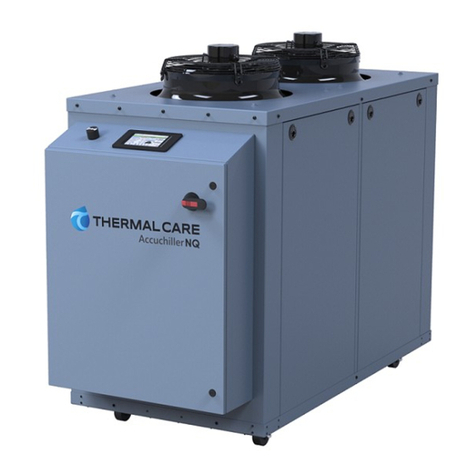
Thermal Care
Thermal Care Accuchiller NQ Series Instruction Manual

Thermal Care
Thermal Care ACCUCHILLER EQ Instruction Manual
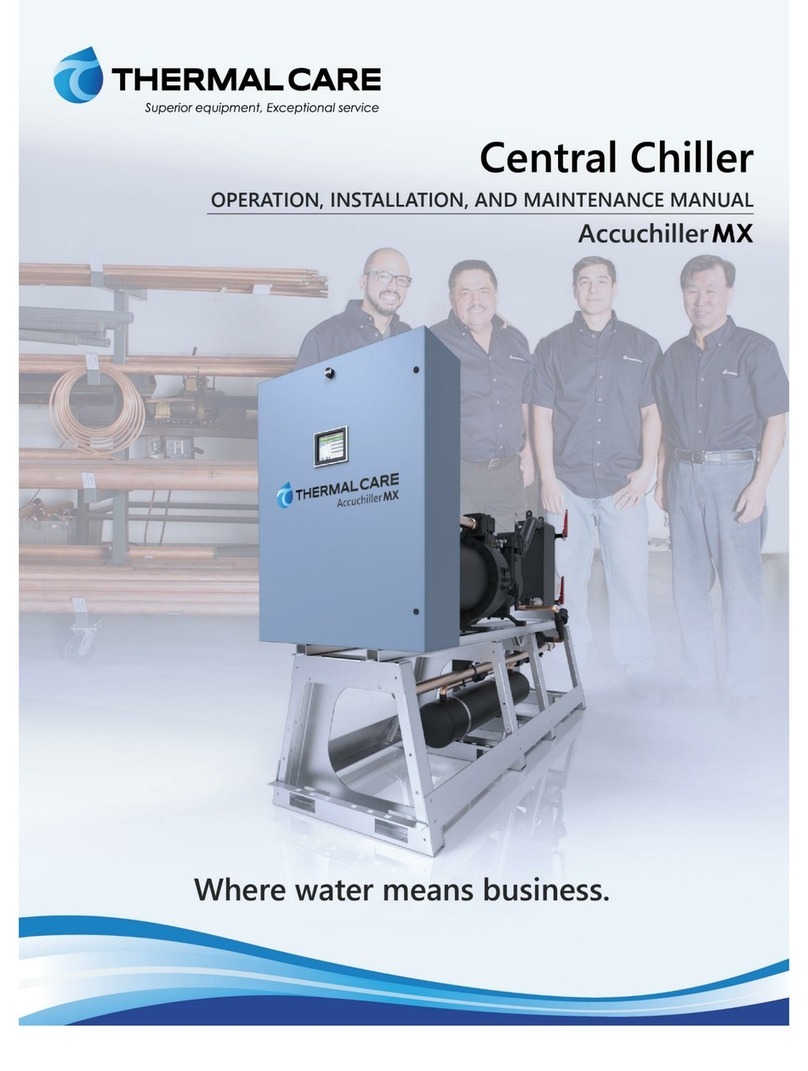
Thermal Care
Thermal Care Accuchiller MX Series Instruction Manual

Thermal Care
Thermal Care NQ Series User manual

Thermal Care
Thermal Care Accuchiller KSE Instruction Manual

Thermal Care
Thermal Care Accuchiller TCF Instruction Manual

Thermal Care
Thermal Care Accuchiller TCFW375 Instruction Manual

Thermal Care
Thermal Care Accuchiller EQ Series User manual

